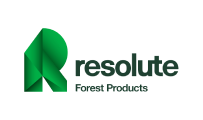Canada is advancing its sustainability agenda with ambitious policies, such as the Clean Electricity Regulations and the Canadian Sustainability Disclosure Standards (CSDS). However, the true impact of these regulations depends on how well businesses integrate them into corporate strategies. Canadian climate action leadership, executives and managers play a critical role in driving this transformation, embedding sustainability into corporate culture, and ensuring meaningful climate action.
Strategies for Corporate Executives to Push Canadian Climate Action Leadership
- Align Corporate Strategy with Policy Frameworks
Executives should ensure that corporate strategies align with federal climate policies and global sustainability standards. The CSDS 2 framework emphasizes Scope 3 emissions disclosure and scenario analysis, guiding companies in assessing climate risks and opportunities. Leaders can proactively adopt these frameworks to enhance transparency and investor confidence. - Develop a Sustainability-First Corporate Culture
Embedding sustainability into company culture requires leadership commitment. Strategies include:- Setting clear sustainability goals aligned with government policies.
- Incentivizing green innovation and rewarding climate-conscious decisions.
- Encouraging employee engagement through sustainability training and initiatives.
- Integrate Climate Risk into Decision-Making
Executives should incorporate climate-related financial risks into business decision-making. The CSDS 2 mandates scenario analysis, allowing businesses to assess their resilience to climate-related developments. Boards and leadership teams must use these insights to make informed decisions that minimize risks and capitalize on opportunities. - Leverage Sustainable Finance and ESG Reporting
With growing investor interest in environmental, social, and governance (ESG) metrics, businesses should enhance their ESG disclosures. While CSDS adoption is voluntary, early implementation positions organizations ahead of future regulatory requirements and builds stakeholder trust. - Enhance Cross-Sector Collaboration
Engaging with policymakers, industry leaders, and sustainability organizations strengthens corporate climate action. Canadian executives can participate in policy dialogues, sustainability alliances, and sector-specific working groups to drive collective progress.
Leadership Skills for Driving Climate Action
Corporate leaders must cultivate the following skills to bridge the gap between government policies and business practices:
- Visionary Thinking: Ability to anticipate sustainability trends and align corporate goals accordingly.
- Regulatory Acumen: Understanding of Canadian and global sustainability regulations, including the CSDS 2 standards and Clean Electricity Regulations.
- Change Management: Leading cultural shifts within organizations to prioritize sustainability.
- Stakeholder Engagement: Building partnerships with investors, policymakers, and communities to drive collective impact.
- Data-Driven Decision-Making: Leveraging ESG data and climate scenario analyses to inform strategic choices.
Strengthening Leadership Capacity with CSE Canada’s Sustainability Training
For executives seeking to enhance their sustainability leadership skills, CSE Canada’s Certified Sustainability (ESG) Practitioner Program provides comprehensive training on integrating climate policies into corporate strategies. This program equips business leaders with the knowledge and tools to navigate the evolving sustainability landscape and drive impactful change within their organizations.
By proactively embracing sustainability, Canadian corporate leaders can bridge the gap between policy and practice, ensuring that climate action is not just a compliance exercise but a core business priority.







